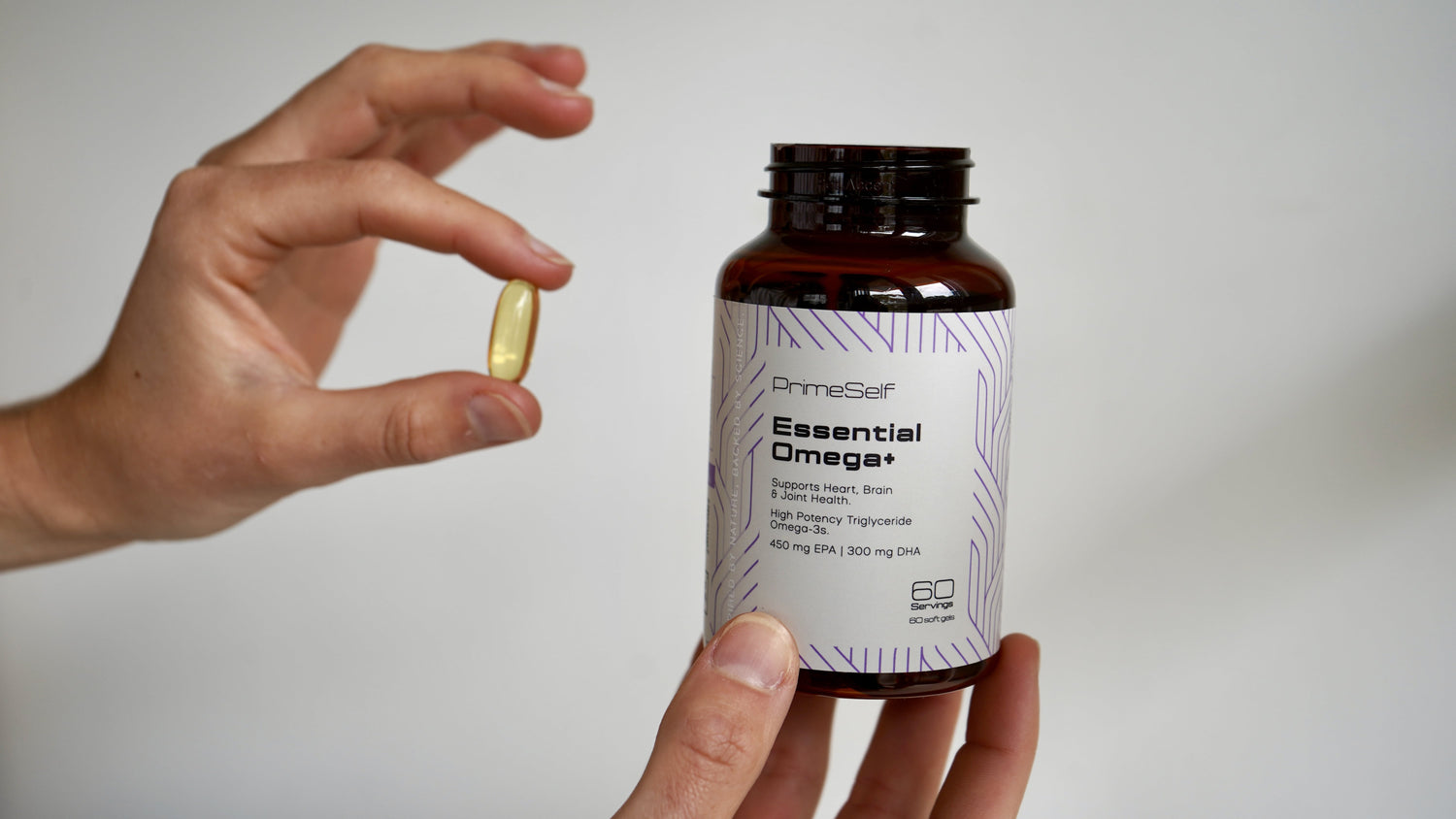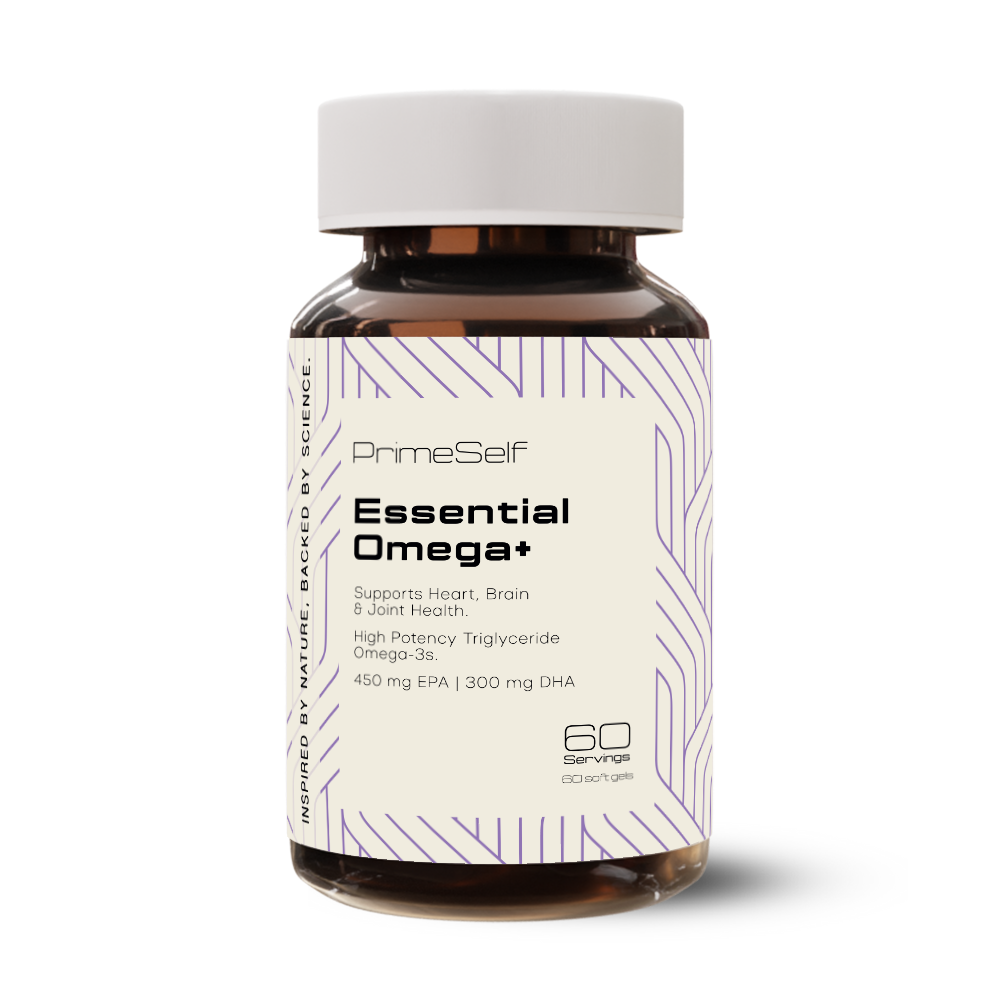
Why Omega-3s Still Matter - And How to Choose the Right One
What are Omega-3 Fatty Acids?
Omega-3 fatty acids are a type of polyunsaturated fat that play an essential role in human health. They’re called “essential” because the body can’t produce them on its own - we have to get them through diet or supplementation.
The two most important omega-3s for human health are:
- EPA (eicosapentaenoic acid): linked with cardiovascular function, healthy inflammation balance, and recovery (Casula et al., 2020).
- DHA (docosahexaenoic acid): critical for brain health, vision, and long-term cognitive performance (Dyall, 2015).
A third type, ALA (alpha-linolenic acid), is found in plant foods like flaxseed, chia seeds, and walnuts. However, the body doesn’t convert ALA into EPA and DHA very efficiently, so it’s far more effective to get EPA and DHA directly (Dyall, 2015).
Why Do Omega-3s Matter?
Omega-3 fatty acids are linked to a wide range of benefits:
- Brain and Cognitive Function: DHA is a major building block of brain tissue. Higher levels of DHA and EPA have been linked with improved memory and even better brain volume (Dyall, 2015).
- Heart and Circulation: Studies show that higher intakes of EPA and DHA (>1 g/day) are associated with reduced cardiovascular risk and mortality (Casula et al., 2020; Journal of the American Heart Association, 2019).
- Inflammation and Joints: Omega-3s help support a healthy inflammation response, which is important for joint comfort and recovery (Casula et al., 2020).
- Mood and Wellbeing: Research links omega-3s to mood balance, immune resilience, and even reduced anxiety (Bafkar et al., 2024).
Put simply: omega-3s aren’t just about one area of health, they’re foundational for brain, heart, and recovery support.
How Can You Get Omega-3s?
You’ve got two main options: diet and supplements.
- Food: Fatty fish like salmon, mackerel, and sardines are the richest natural sources of EPA and DHA. Plant foods like flaxseed and chia provide ALA.
- Supplements: A reliable way to ensure you’re getting enough EPA and DHA every day, without worrying about portion sizes or contaminants often found in larger fish.
While both food and supplements play a role, supplementation is often the more reliable option for ensuring consistency, convenience, and safety. With a single capsule, you know you’re getting a clinically effective dose of EPA and DHA every day.
Food Sources vs Supplements
Omega-3s show up in both animal and plant foods, but the type and effectiveness differ. Fish and seafood give you EPA and DHA directly, while plants provide ALA which the body struggles to convert. That’s why direct intake from fish or supplements is usually more effective.
Here are some of the richest sources:
|
Food Source |
Omega-3 Content (approx.) |
|
Mackerel (100g) |
4,580 mg |
|
Salmon (100g) |
2,150 mg |
|
Sardines (100g) |
1,480 mg |
|
Anchovies (100g) |
2,050 mg |
|
Rainbow trout (100g) |
1,110 mg |
|
Canned tuna (light, 100g) |
270 mg |
|
Walnuts (28g) |
2,570 mg ALA |
|
Chia seeds (28g) |
5,060 mg ALA |
|
Flaxseed (ground, 28g) |
6,350 mg ALA |
The catch? Relying solely on food can be tricky. Fatty fish are great sources, but many people don’t eat enough of them and bigger fish like tuna can carry higher levels of mercury.
Are We Getting Enough?
In short - most people aren’t.
The modern Western diet is low in fatty fish, and while plant foods offer ALA, that doesn’t easily translate into usable EPA and DHA. That’s why supplements are often recommended to close the gap (Dyall, 2015).
If you’re not getting enough, the effects can add up: lower cognitive performance, reduced cardiovascular protection, and mood imbalances. Research even links insufficient DHA with age-related cognitive decline, while low EPA is tied to higher inflammation (Dyall, 2015; Casula et al., 2020).
Over time, this increases the risk of cardiovascular issues and impacts long-term brain health (Journal of the American Heart Association, 2019).
How to Choose a Good Omega-3
Not all fish oils are the same. Here’s what to look for:
- Effective dose: At least 500–750 mg combined EPA + DHA per serving
- Absorption form: Triglyceride (TG) form is closest to natural fish oil and absorbed better than ethyl ester (EE), which is synthetic, cheaper, and less stable.
- Purity: Third-party tested for heavy metals and oxidation (Choose brands with TOTOX under 15 — and ideally under 10 is ultra-fresh).
- Clean formulation: No fillers, artificial flavouring, or unnecessary additives.
- Sustainability: Wild-caught, traceable fish sources.
If a supplement doesn’t meet these criteria, it may not deliver the benefits you expect and in some cases, could do more harm than good.
Why PrimeSelf Omega-3s Are Different
Here’s the problem: most omega-3 supplements cut corners. Weak doses, unstable forms, and poor testing standards are common. Some oxidise quickly, leaving you with rancid oil. Others use poorly absorbed ethyl ester forms, so what’s on the label doesn’t always reach your cells.
PrimeSelf Essential Omega-3s were created to solve these issues. Every softgel delivers effective doses, uncompromising purity, and independent verification.
Each softgel contains:
- Effective dose: 750 mg combined EPA + DHA (450 mg EPA, 300 mg DHA).
- Triglyceride form: KinOmega™ 3624TG for superior absorption.
- Purity: TOTOX score of 9.0 (well below freshness threshold). IFOS™-certified raw material, tested for heavy metals and oxidation.
- Clean formulation: No GMO, gluten, dairy, soy, preservatives, or artificial colourants. Just fish oil, bovine gelatin, glycerin, and purified water.
- Sustainably sourced: Wild-caught anchovies, fully traceable and certified by Friends of the Sea.
- Plastic Neutral: Certified through rePurpose Global — every bottle offsets its plastic footprint.
- Halaal certified: Suitable for Halaal diets, with no hidden additives.
Behind the scenes, PrimeSelf partners with KinOmega™, backed by over 20 years of R&D and more than 40 global patents. Their advanced distillation process keeps oxidation levels low and quality consistent.
In short: no corners cut. PrimeSelf Omega-3s combine science, sustainability, and rigorous testing to give you a supplement you can actually trust — with no fishy aftertaste.
How to Use
- General support: One softgel daily with a meal containing healthy fats.
- Advanced support (inflammation, heart, or brain health): Two softgels daily, or as advised by a healthcare provider.
The Bottom Line
Omega-3 fatty acids are essential for brain, heart, and overall wellbeing. Yet most people don’t get enough from diet alone. The right supplement makes sure you’re getting the right dose, in the right form, with the purity and sustainability you can rely on.
A good omega-3 supplement should be:
- At least 750 mg EPA+DHA
- In triglyceride form
- Third-party tested
- Clean-label and sustainable
PrimeSelf Omega-3s deliver all of this in a single softgel. Purity, potency, absorption, and results — with no aftertaste, no guesswork, and no compromises.






